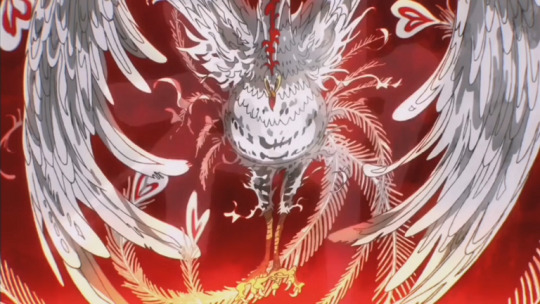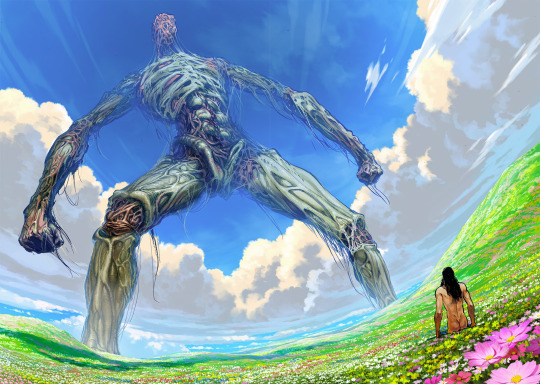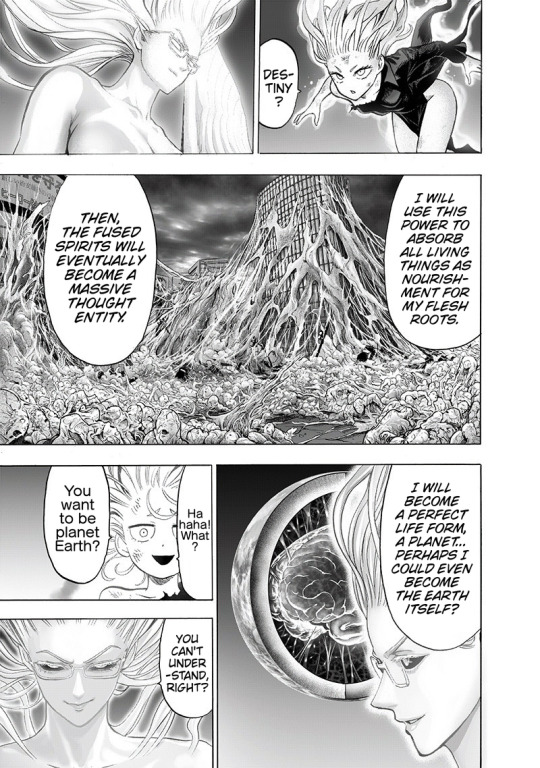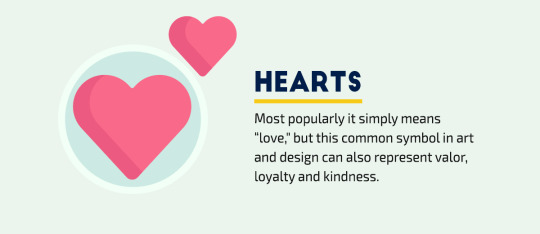#there's so many associations with rebirth death unity of the material and spiritual
Explore tagged Tumblr posts
Text
You know my theory about Leander possibly being dead?
I initially said that he may be a walking corpse. I'm kinda wavering on this theory, though (though it'd be fucking awesome if it were true). Maybe what I'm thinking isn't THAT drastic, but I do believe that he has something to do with death and necromancy. And I do believe that he is sacrificing/using people somehow. Why? And what for? I'm not sure.
I do think that he has died once and probably came back wrong (there is no way he survived a scar like that). He might have learned his magic skills from some entity while he was dead (or near death), which is why he is so skilled, and he may have to spend the rest of his life paying back whoever he has learned from. The entity (or other people) may be what is powering his magic.
He may have been trying to gain power so that he can change Eridia/Lowtown for the better, and, considering his heavy association with the Magician tarot card, he may have gotten greedy, so his lust for power turned from something selfless into something selfish.
#touchstarved#touchstarved game#touchstarved leander#leander#touchstarved theory#I do wonder why mc gets dizzy every time they touch him#anyway#there's so many associations with rebirth death unity of the material and spiritual#with regards to leander#plus I felt like my initial theory was a bit too wild so I had to tone it down#this also may be why he and ais have so much tension#because their situations may parallel one another#IDK IDK IDK#I remember his quote being something like 'mage's lust for power is always dangerous'#something like that#and how he fears the unknown#making me believe that he has an endless thirst for knowledge and power
120 notes
·
View notes
Text
Disaster level: God
Ain't it kinda curious how...

Disaster levels Tiger, Demon and Dragon are represented fairly literally... Tiger is Tiger, Demon is an Oni and Dragon is a dragon.
And then there is Disaster level: God. The odd one out.
A phoenix, out of all things.

Which is both a phoenix and red-crowned crane at the same time. More symbolic than literal, because actual Disaster level: God's we've seen are not like that. Godrou wasn't like that and God ain't apparently like that. It also does not match the description of the Disaster level.
"A threat endangering the survival of all humanity."
One would think God level threat would be associated with something very destructive and not the opposite. We know the self-proclaimed Disaster level Godrou was pretty destructive.
The phoenix is an immortal bird associated with Greek mythology (with analogs in many cultures) that cyclically regenerates or is otherwise born again. Associated with the sun, a phoenix obtains new life by arising from the ashes of its predecessor. Some legends say it dies in a show of flames and combustion, others that it simply dies and decomposes before being born again.
It is also the logo of the Hero association.

Who came up with this logo anyway and the disaster level picture in the pamphlet? I'd be interested to know. A wild guess it was Blast.
Makes you think why a threat to survival of human race would be associated with a mythological being of Luck, Longevity and Fidelity.
Or the phoenix...
Over time, extending beyond its origins, the phoenix could variously "symbolize renewal in general as well as the sun, time, the Empire, metempsychosis, consecration, resurrection, life in the heavenly Paradise, Christ, Mary, virginity, the exceptional man, and certain aspects of Christian life".
Hmm... *rubs chin*

Heavenly paradise you say?
So OPM God is like cyclically regenerating, timeless, rebirthing, resurrecting, transmigration of souls and associated with sacred stuff and the sun?

That's the sun alright. Also it's divine power completely scorched Homeless Emperor, as Zombieman points out when God takes his powers away.
The philosophy of religion recognizes the following as essential attributes of God:
Omnipotence (limitless power) Omniscience (limitless knowledge) Eternity (God is not bound by time) Goodness (God is wholly benevolent) Unity (God cannot be divided) Simplicity (God is not composite) Incorporeality (God is not material) Immutability (God is not subject to change) Impassability (God is not affected)
Then the flowers in the garden we can see at the forefront are also symbolic, Lotus in religion.
Nelumbo nucifera.
Nelumbo nucifera is the species of lotus that has historical cultural and spiritual significance. It is a sacred flower in both Hinduism and Buddhism, representing the path to spiritual awakening and enlightenment. In Christianity the lotus flower is often associated with the apostle Thomas and his coming to India. It was also an important symbol in ancient Egypt, where it represented the path from death to rebirth to the afterlife. In Asian art a lotus throne is a stylized lotus flower used as the seat or base for a figure. It is the normal pedestal for divine figures in Buddhist art and Hindu art, and often seen in Jain art. Originating in Indian art, it followed Indian religions to East Asia in particular. Lotus flowers are also often held by figures.

It has been considered a symbol of beauty, absolute purity, honesty, rebirth, self-regeneration, enlightenment. It was considered a supreme plant by Egyptians for its fragrant transformative scent while living its alternating existence below and above the water surface. Interestingly it also was used by them as a medium to induce altered states of consciousness and make contact with other realms of existence. Blue lotus was considered as a symbol of sun rising out of night.
In Hindu philosophy lotus is regarded to be the first born of creation and a magic womb for the universe and gods. Associations of it have also been made to longevity,fertility,wealth and knowledge.
Its considered a symbol of freedom from desire, material attachment while invoking purity at level of mind, speech and action by Buddhist tradition. The also connected: •The symbolism of victory of spirit over that of intelligence, knowledge and wisdom with Blue lotus. •"White lotus" to symbolism of Bodhi being awakened, ascent towards mental purity and spiritual perfection. It also implies a state of spiritual maturity connect to pacification of one's nature. •"Pink lotus" is considered as Buddha's true lotus and the supreme of all.
Yea I think we know why Disaster level: God is a phoenix now.
God governs over the Cycle of rebirth. The transmigration of souls. Or is associated with the process somehow.
(So who the f came up with the HA logo? Someone knew? It had to be Blast right? We need to talk about Blast some more, that guy has to be broken af)
Saṃsāra (Devanagari: संसार) is a Sanskrit/Pali word that means "world". It is also the concept of rebirth and "cyclicality of all life, matter, existence", a fundamental belief of most Indian religions. Popularly, it is the cycle of death and rebirth. Saṃsāra is sometimes referred to with terms or phrases such as transmigration, karmic cycle, reincarnation or Punarjanman, and "cycle of aimless drifting, wandering or mundane existence"
The Ouroboros symbols. Blast's circle gauntlet that turns infinity gauntlet. Gyoro's theory on death and rebirth. Three era of changes in the webcomic. Beings reborn as monsters, existence being basically cycle of aimless drifting, wandering and mundane existence and suffering and karma.
God also basically reincarnated the soul of Orochi into Sage centipede too didn't it? It can do that with all souls then?

This place that Zombieman talks about is where God resides. The spiritual realm that Child Emperor also visited.
(I think God is mad cuz Zombieman can just juke him by being immortal himself and regenerating)
This manga panel of Evil eye would also suggest that it is talking about souls, as Evil eye seems like the very personification of Grim reaper.

But also something more ominous, that a being would be capable of putting souls together to get power and amplify themselves. Psykos definitely knows more than she lets on about God and souls.
God itself visibly resembles the Preta visually. Hungry Ghost.
The development of the concept of the preta started with just thinking that it was the soul and ghost of a person once they died, but later the concept developed into a transient state between death and obtaining karmic reincarnation in accordance with the person's fate. In order to pass into the cycle of karmic reincarnation, the deceased's family must engage in a variety of rituals and offerings to guide the suffering spirit into its next life.If the family does not engage in these funerary rites, which last for one year, the soul could remain suffering as a preta for the rest of eternity.
Pretas are believed to have been false, corrupted, compulsive, deceitful, jealous or greedy people in a previous life. As a result of their karma, they are afflicted with an insatiable hunger for a particular substance or object. Traditionally, this is something repugnant or humiliating, such as cadavers or feces, though in more recent stories, it can be anything, however bizarre. In addition to having insatiable hunger for an aversive item, pretas are said to have disturbing visions. Pretas and human beings occupy the same physical space and while humans looking at a river would see clear water, pretas see the same river flowing with an aversive substance, common examples of such visions include pus and filth
The Sanskrit term प्रेत preta means "departed, deceased, a dead person", from pra-ita, literally "gone forth, departed". In Classical Sanskrit, the term refers to the spirit of any dead person, but especially before the obsequial rites are performed, but also more narrowly to a ghost or evil being. The Sanskrit term was taken up in Buddhism to describe one of six possible states of rebirth. The Chinese term egui (餓鬼), literally "starving ghost", is thus not a literal translation of the Sanskrit term.
Pretas are invisible to the human eye, but some believe they can be discerned by humans in certain mental states. They are described as human-like, but with sunken, mummified skin, narrow limbs, enormously distended bellies and long, thin necks. This appearance is a metaphor for their mental situation: they have enormous appetites, signified by their gigantic bellies, but a very limited ability to satisfy those appetites, symbolized by their slender necks.
Pretas are generally seen as little more than nuisances to mortals unless their longing is directed toward something vital, such as blood or flesh. However, in some traditions, pretas try to prevent others from satisfying their own desires by means of magic, illusions, or disguises. They can also turn invisible or change their faces to frighten mortals. Generally, however, pretas are seen as beings to be pitied. Thus, in some Buddhist monasteries, monks leave offerings of foods, beverages, incenses, lights, fruits or flowers to them before meals.
In all honesty though, that description of Preta sounds legitimately sad and pitiable existence. Suffering for rest of the eternity.
Does OPM God actually eat souls though, like a starving ghost? Uuuuh...



Mommy, I'm scared.
It's no wonder Blast and Space Justice league want to prioritise making sure this thing stays behind the dimensional seal. Absolutely a threat to the entire universe if unleashed if it can micromanage souls how it pleases. Especially worrisome if it can absorb souls and get more power.
And it has probably been going on for a while...
Edit: Evil eye inclusion
#opm#one punch man#opm meta#opm manga panels#opm anime screencaps#opm god#disaster level: god#phoenix#lotus#hungry ghost#psykos#zombieman#samsara#cycle of rebirth#long
55 notes
·
View notes
Text
Symbols that represent guidance :

The dove is often associated with peace, tranquility and grace. Its meaning has become so universal that major world religions such as Christianity and Judaism have used the symbol as the truest representation of peace, grace and divinity.
In modern times, it has also become synonymous with pacifism and the end of a conflict. Its progression from a religious to a political symbol is evidenced in its adoption as the symbol of anti-violence campaigns and the Olympic games, which has become a means to promote international cooperation and peace.
Communicators of all types can use the symbol to communicate serenity, harmony, unity and the absence of violence.

All over the world, in both myth and art, the butterfly is seen as a symbol of transformation and change, thanks to its metamorphosis from a wormy caterpillar to a stunning insect with vividly coloured wings.
In certain cultures, this conspicuous insect is a representation of the soul and is used in tales and myths to signal a visit from someone who passed away or signal the possibility of life after death. For example, in the movie “Titanic,” the decorative butterflies on Rose’s hair comb were used to represent her freedom from the “cocoon” of her engagement to a man she did not love.
Communicators of all types can use this symbol to visually represent any type of change or transformation, both internal and external.

Water historically represents life to a community since it’s a requirement for human survival. Thus, symbols for water were especially common throughout time, representing birth, fertility, and refreshment. In fact, water is often viewed as the source of life itself, as we see evidence in countless creation myths in which life emerges from primordial waters.
Just as we use water to wash away dirt, sweat and soil, water cleanses a canvas. But it also becomes a symbol of obstacles, such as a river or ocean to cross. Either way, water can be a symbol of power in visual stories, with the ability to claim audiences and characters, as well as free them.

The use of the owl as a symbol is as popular today as it ever was: You see them everywhere, from accessories and clothing to interior design and home décor. But the symbol’s popularity is nothing new.
Its historical popularity as a symbol is also due to the fact that an owl always accompanied Athena, the Greek goddess of learning. In Native American cultures, the owl is seen as a creature of the night, and so is associated with the supernatural and even death.
Because they are usually nocturnal, owls have often been seen as mysterious and even magical creatures that dwell in and emerge from the darkness. Europeans in the Medieval Ages even believed the creatures might be sorcerers in disguise. Likewise, West African and Aboriginal Australian cultures viewed the owl as a messenger of secrets and a companion of sorcerers.
In a visual message such as a logo or design, an owl can be used to represent wisdom, intelligence or a lesson that needs to be learned.

This symbol may bring to mind bows and arrows, like the kind used by Robin Hood and his merry men, but they are also ubiquitous in the modern world: Think of the cursor on your screen or the arrows you see on websites to draw attention to certain elements on the screen. You also see them on highways, where they serve to direct your gaze and steer you in the right direction.
In logos, arrows often signify movement, progress, ambition and direction. Arrows can even be used as a symbol that only our subconscious minds immediately recognize. Examine the famous FedEx logo, for example. Hidden in the white space between the E and the X is an arrow pointing to the right. Since we read from left to right, pointing right signifies moving forward, and the arrow is speed.

One of the most widely recognized symbols is the heart. While it still means “love,” it can carry much more subtle meanings, and it has many variants that have evolved through time. For example, some of the early versions of the symbols were more realistic and rounded, while newer representations are simplified renditions in the form of pictograms.
The first known use of the heart symbol is found in a 13th-century miniature representing a suitor offering his heart to the woman he is courting. The heart symbol also has been a common feature on coats of arms. In such uses, the symbol can stand for many of the ideas we associate with hearts today, including love, valor, loyalty and kindness. Hearts can also carry a religious connotation, such as when they’re depicted surrounded by flames or thorns.

Just like symbols, colors have also been assigned meanings, depending on the context.
Blue, for example, may symbolize disparate ideas, such as calmness and melancholy, at the same time. Another example is the color red. While it is often used to signify danger, it is also frequently associated with romance and love.
Color symbolism can vary greatly because meanings are assigned to different symbols and colors at an individual, cultural and international level.

Just as the cross is associated with Christianity and the star of David is a universal symbol of Judaism, a crescent symbolizes another major world religion. But the use of the crescent moon as a symbol predates Islam by several thousand years. In fact, the symbol was in use by ancient cultures in Central Asia and Siberia in their worship of the sun, moon and sky gods.
Because it’s literally a drawing of the second lunar phase, the crescent, also referred to as the sickle, is the astrological sign representing the moon. Since the crescent moon literally means to grow and increase, the shape often symbolizes new beginnings and the making of dreams into reality. It can even be connected to rebirth and immortality.

An ancient symbol with many uses, the star can take on different meaning based on both its context and its number of points. Because they are some of the most distant bodies we can see with the naked eye, stars can symbolize physical distance, such as a journey, or emotional distance, such as a misunderstanding.
Before advancements in science were made that allowed humans to understand the nature of our galaxy and its celestial bodies, stars were seen as a symbol of the struggle between light and darkness, between the spiritual and material worlds.
Stars are also commonly associated with magic. Thus, wizards and magicians are often seen with stars on their clothes, and the act of magic can be visually depicted with stars and starbursts. A shooting star is associated with wishes, hope and dreams.

Light is used by many cultures to symbolize illumination in the metaphoric state. It can symbolize purity, goodness, clarity, insight and knowledge.
Light is the symbol of joy and of life-giving power, as darkness is of death and destruction. Therefore, in religion, light is often associated with immortality and a higher power. For example, in the Jewish Holy of Holies, a cloud of light symbolized of the presence of Yahweh.
In our physical world we see things through the medium of light. In the symbolic world, we see not with light but with wisdom. Therefore, light is often associated with enlightenment.
0 notes
Text
I don’t know, sir. Was it Molotov?
This was going to become another abandoned project. Not in totality, the seeds of it would have been scattered on, but this particular iteration of what I intended to do: Go through The Invisibles issue by issue and write about it from the perspective of a practicing witch, wasn’t going to happen. But I found spontaneous cause to re-read issue #1, and it’s buzzing with such synchronicity for me at this moment that I think this is actually going to happen. Obviously, SPOILERS if you haven’t read the series, definitely for the issue currently being discussed, and possibly for the series as a whole, but I will try to preserve the overarching Mystery of the series as much as possible and only discuss what is necessary and vital for my own ongoing practice. "And so we return and begin again.” We open with pyramids and scarabs; life, death, and rebirth. And Molotov cocktails. This won’t be a close reading but a series of impressions and significances. We begin with this theme of returning, and just as I’m returning to read this, almost every “good guy” character in the first issue is in some state of time displacement. Some of this is only cryptic suggestion at this point, to be explored later (King Mob looks pretty young, how can he be “the same today” as in 1924). But the protagonist of this arc, Dane McGowan, classic “troubled youth” sees ghosts, sees “DEAD BEATLE$” Oh. Beatles, I just got that, another scarab reference. Dead Beatles, deadbeats, death and rebirth and “godhead made of living music.” This is where Grant Morrison’s magical author avatar, his “fiction suit,” does his somewhat embarrassing but even now somewhat captivating (to me anyway) “John Lennon summoning.” You can find the result of that ritual here, at a panel with Gerard Way: https://www.youtube.com/watch?v=VP22pAOVlVI This brings up two important points. One, so much of this series is about fame and aspiration, something I’ve found not to be the false consciousness or debased distraction it often assumed to be in many “spiritual” or leftist circles. Fame is a key aspect of Glamour, something any magician who uses smoke and mirrors to reach other worlds must grapple with.
The big ol’ omnibus I have of The Invisibles, released near the end of the world in 2012, opens with an introduction from Gerard Way. He describes meeting Grant Morrison at the DC Comics offices and being blown away with an immediate sense of: HOLY SHIT IT’S KING MOB!!! But by now, from his tenure in My Chemical Romance, Gerard Way is more famous than Grant Morrison has ever been, and the moment described in the introduction is echoed (perhaps more profanely, but no less powerful for it) in the above video when Grant Morrison says, “Look, Gerard Way’s getting my guitar!” When Dane McGowan sees his ghosts of “Dead Beatles,” Stuart Sutcliffe is morosely discussing leaving the band, to which John Lennon replies, “I don’t know why you’re going on about death, anyway, you’re only leaving a *band*, Stu. It’s not the end of the fucking world.” But Stuart Sutcliffe would die a few years later. And from Dane’s perspective, he’s also right to say, “Maybe we *are* dead, John. We could be dead and not know it.” The Invisibles is filled with these little moments, these nexuses in time where ships pass each other in the night, where one party “misses the boat,” and the other rides off for glory. And usually at some other moment, those fortunes reverse. Here at the crossroads. This is also where Dane re-meets his childhood imaginary friend. And it’s moments like the one described above, combined with this connection to childhood, combined with Alejandro Jodorowsky’s conviction that he as an octogenarian can heal his childhood self through his magical cinematic memoirs... that has made me think I might be able to do the same thing, and attempt time travel. Point two of the aforementioned duo: One of the reasons the John Lennon ritual is a bit embarrassing is that John Lennon was such a little shit, abusive, misogynistic, racist; contrary to the glamour he’s been given as an avatar of love. And at that, the Beatles, while significant, are pretty monumentally overrated in the big scheme of things. But at this point in the timeline, I reflect upon how much I love and find solace in the work of particular artists inspired by the Beatles (most significantly Grant Morrison and Julie Taymor), even if the position of the Beatles themselves in the canon is a bit grating at best, and counter-revolutionary at worst. And I think about a connection I didn’t think to make upon first read-through: What if Dane McGowan is intended as some kind of rebirth of John Lennon? A do-over. A chance to make the real person more like the avatar. Dane is kind of a little shit at the start of the story, and pointedly so. Nowhere near as horrific as some of the stories about John Lennon (he is still a kid at this point, after all), but certainly misogynistic and transphobic. He has to unlearn these patterns, and ultimately die as the old Dane, to progress as a magician, to become Invisible. This is one of the core arcs of the series overall. A child of poverty and neglect who becomes a Buddha. Through, I would argue, something quite similar to vanguardism. The melancholy with which the series reflects upon the various missed opportunities for a more liberatory history is countered by a bright, powerful, fearless joy that in moments is utterly convincing: time travel is possible, those lost histories can be reborn. Those alternate universes still exist in latent form, and can be brought to bear upon the present, can be made to shape Reality. Fitting then, that the issue also opens with a reflection on unity and division within the Left, Dane’s teacher explains: “We’re going to be looking at the ways in which the early links between communist theory and other radical political movements were *severed* following the revolution.” As a Marxist-Leninist myself, I may have a different perspective on that severance than some of my anarchists friends, but I think we’d agree that the Left is in many ways lesser for it. I think the USSR was vitally necessary for global liberation, and the world would be a hell of a lot worse off without it, but that doesn’t mean that the different sides of the various schisms within the Left have nothing to learn from each other. Maybe it’s time to crack open that old Bread book after all. And it’s so interesting that a Kropotkin reference should play such a key role in this issue. I had just been looking him up earlier today after witnessing a Facebook argument between Marxists and anarchists where both sides were accusing each other of not being sufficiently materialistic. And Marxism has materially *worked*. But there is always more material to be found in our failed attempts, its potential coiled tight and ready be let loose on the world. We should be realistic about our current dialectic, but it is possible, through science and magic, to travel to worlds outside it. And to bring something back. I want to conclude with a reflection on a failed effort of mine. For a long time, when I was still a practicing Buddhist, I had planned on writing and directing an ongoing film series called American Kensho. Only the first one was ever completed. I have been planning for a while on finally making a link to it public, with a message to collaborators and crowdfunding patrons about how we might reward their patience on years-delayed rewards, given the radical change in direction of my life and practice. I’m not a Buddhist anymore, though I know that path works very well for countless people around the world. And some of them may even be able to render it compatible with witchcraft. But I could not, and the Devil won out in the end. As such, the ideology of the film is no longer exactly what I’d ascribe to. I’d no longer be interested in associating the Devil with the various markers of oppression the villains in this film obviously embody, nor would it be acceptable to have only the bad guys speak in tongues. But it’s still a film I’m very proud of, and there are seeds of what I would become within it. Apple seeds perhaps, because what’s making me post this film first here rather than in that more sober announcement is the character of Julia, and striking parallels to the introduction of Ragged Robin in The Invisibles. Julia (in a comic shop no less) similarly muses on apples and Eve. And just as one of my favorite scenes in the film involves Julia reading Tarot, we first meet Ragged Robin pulling the Moon card (in a setting I can’t help let remind me of several of the locations in our film). But the card is reversed. While Julia seems to deeply believe in the Tarot, uses it urgently, Ragged Robin is listless and “thinks it’s bullshit.” While Julia, “rather thinks Eve had it right,” Ragged Robin “isn’t going to fall for that one.” But she takes the apple anyway. And this would make King Mob, who offers the apple, the Devil. “Funny how things turn out, isn’t it?”
https://vimeo.com/cell23/manifestdestiny
8 notes
·
View notes